There are over 20 Kilimanjaro campsites.
In this article, we share details of the campsites on Mount Kilimanjaro by routes and also look at Kilimanjaro’s base camps or high camps.
My Quick Takeaways
When climbing Mount Kilimanjaro, your overnight stops will vary depending on the chosen route. Here's a brief overview of the primary Mt Kilimanjaro campsites associated with each route:
1. Lemosho Route:
- Mti Mkubwa Camp (2,820 metres): Also known as "Big Tree Camp," it's the first stop after trekking through the lush rainforest.
- Shira Camp 1 (3,500 metres): Located on the western edge of the Shira Plateau, offering expansive views.
- Shira Camp 2 (3,850 metres): Situated further across the plateau, providing acclimatisation opportunities.
- Barranco Camp (3,900 metres): Nestled in the shadow of the imposing Barranco Wall.
- Karanga Camp (3,960 metres): Often used by trekkers for acclimatisation before the final ascent.
- Barafu Camp (4,670 metres): The base camp for summit attempts, perched on a rocky ridge.
2. Machame Route:
- Machame Camp (2,820 metres): The initial campsite after ascending through dense forest.
- Shira Camp 2 (3,850 metres): Shared with the Lemosho Route, located on the Shira Plateau.
- Barranco Camp (3,900 metres): Known for its scenic views and proximity to the Barranco Wall.
- Karanga Camp (3,960 metres): A strategic stop for acclimatisation.
- Barafu Camp (4,670 metres): The final stop before the summit push.
3. Marangu Route:
- Mandara Hut (2,700 metres): Set within the rainforest zone, offering hut accommodation.
- Horombo Hut (3,720 metres): Provides a mid-point rest with views of both Kibo and Mawenzi peaks.
- Kibo Hut (4,700 metres): The last hut before the summit attempt, located in a barren alpine desert.
4. Rongai Route:
- Simba Camp (2,600 metres): The first campsite, situated in a heather zone.
- Kikelewa Camp (3,600 metres): Offers panoramic views and a sense of isolation.
- Mawenzi Tarn Camp (4,330 metres): Located beneath the spires of Mawenzi, beside a mountain tarn.
- Kibo Hut (4,700 metres): Shared with the Marangu Route, the final stop before the summit.
5. Umbwe Route:
- Umbwe Cave Camp (2,850 metres): A secluded campsite near ancient caves.
- Barranco Camp (3,900 metres): Joins the Machame and Lemosho routes here, known for its impressive vistas.
6. Northern Circuit Route:
- Shira Camp 1 (3,500 metres): Starting on the western side, this camp offers views of the Shira Plateau.
- Moire Hut (4,200 metres): A less-frequented camp, providing solitude and acclimatisation.
- Pofu Camp (4,020 metres): Situated in the northern moorlands, with chances to spot wildlife.
- Third Cave Camp (3,870 metres): A quiet spot nestled beneath Kibo's northern face.
- School Hut (4,800 metres): A higher alternative to Kibo Hut, used before the summit attempt.
Each route offers a unique experience with its own set of campsites, varying in scenery, altitude, and amenities. Ready to learn more about the Kilimanajoro campsites? Let's rock.
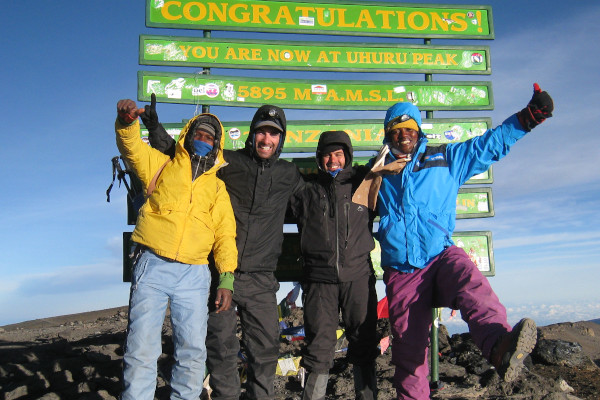
Plan your Kilimanjaro trek
Get a quote from my recommended local Kilimanjaro operator
Kilimanjaro Campsites by Route
Campsites on Mt Kilimanjaro vary by route. Here’s a breakdown of camps by route, including elevations.
Lemosho Camps
Below are the camps on the Lemosho route. As the route can be completed on a 6, 7 or 8-day itinerary, the camp options vary.
For example, 6-day itineraries typically skip Mti Mkubwa, and some operators use Moir Hut as an alternative to Shira Camp 2 (although this is rare).
- Start Gate: Londorossi (2,100 meters)
- Mti Mkubwa Camp (2,820 meters)
- Shira Camp 1 (3,500 meters)
- Shira Camp 2 (3,850 meters), sometimes Moir Hut (4,150 meters)
- Barranco Camp (3,900 meters) via Lava Tower (4,600 meters)
- Karanga Camp (3,960 meters)
- Barafu Base Camp (4,670 meters) to Summit (5,895 meters)
- Descent: Millennium Camp (3,820 meters) or Mweka Camp (3,100 meters)
- Finish Gate: Mweka Gate (1,640 meters)
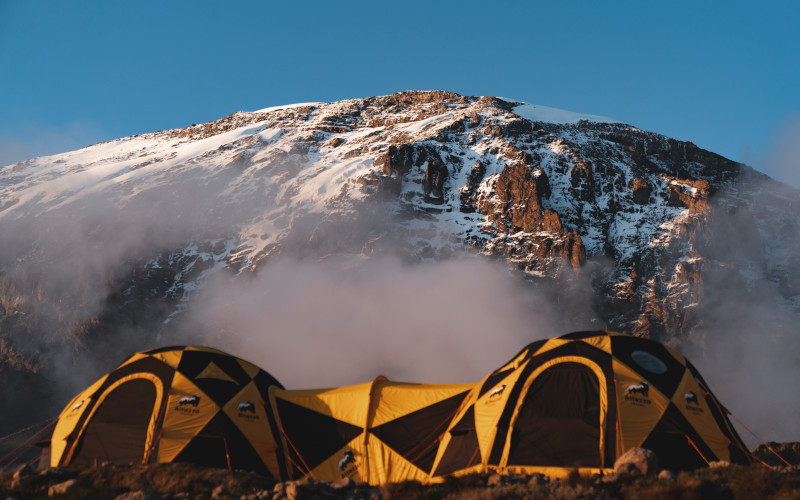
Kilimanjaro camping tents
The Shira route is almost identical to the Lemosho but has a higher start point. For this reason, it is seldom used as it provides poor acclimatisation.
The Shira route is effectively the 6-day Lemosho route with a stop at Simba Camp (3,630 meters) on day 1.
Machame Camps
The Machame route starts in the south and can be completed on a 6 or 7-day itinerary. The latter uses Karanga camp as an additional acclimatisation day. Here are the camps on the Machame.
- Start Gate: Machame Gate (2,100 meters)
- Machame Camp (2,820 meters)
- Shira Camp 2 (3,850 meters)
- Barranco Camp (3,900 meters) via Lava Tower (4,600 meters)
- Karanga Camp (3,960 meters)
- Barafu Base Camp (4,670 meters) to Summit (5,895 meters)
- Descent: Millennium Camp (3,820 meters) or Mweka Camp (3,100 meters)
- Finish Gate: Mweka Gate (1,640 meters)
Umbwe Camps
The Umbwe route follows a more direct path up Mount Kilimanjaro from the Southside of the mountain.
The route is used by those looking to scale Kilimanjaro via the Western Breach. It can be completed on a 5, 6 or 7-day itinerary.
The latter builds in an additional acclimatisation day at Barranco Camp. Here are the camps on the Umbwe.
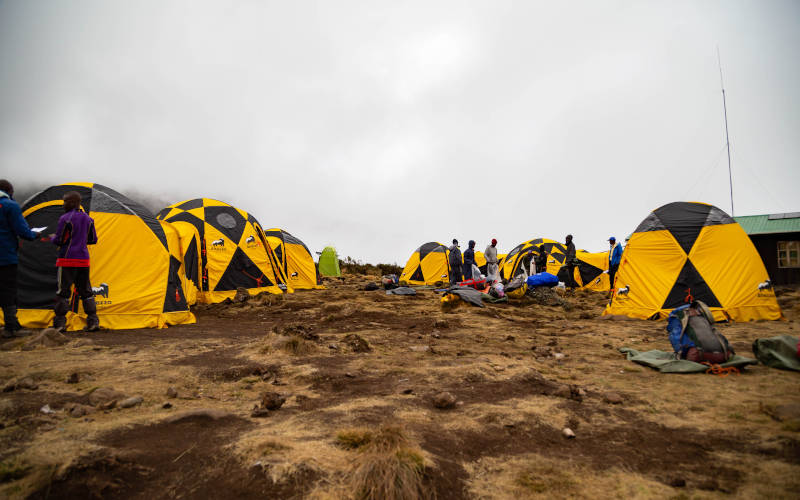
- Start Gate: Umbwe Gate (1,600 meters)
- Umbwe Cave Camp (2,850 meters)
- Barranco Camp (3,900 meters)
- Karanga Camp (3,960 meters)
- Barafu Base Camp (4,670 meters) to Summit (5,895 meters)
- Descent: Millennium Camp (3,820 meters) or Mweka Camp (3,100 meters)
- Finish Gate: Mweka Gate (1,640 meters)

Plan your Kilimanjaro trek
Get a quote from my recommended local Kilimanjaro operator
Marangu Camps
The Marangu Route is the only trail on Kilimanjaro that uses hut accommodation. It can be completed on a 5 or 6-day itinerary.
The latter builds in an additional acclimatisation day at Horombo Hut. Here are the camps on the Marangu.
- Start Gate: Marangu Gate (1,870 meters)
- Mandara Hut (2,700 meters)
- Horombo Hut (3,720 meters)
- Kibo Hut (4,700 meters) to Summit (5,895 meters) back to Horombo
- Finish Gate: Mweka Gate (1,640 meters)

Hut accommodation on the Marangu Route
Rongai Camps
The Rongai Route is the only trail that starts from the North of Mount Kilimanjaro. It can be completed on a 6 or 7 day itinerary. Here are the camps on the Rongai.
- Start Gate: Nalemuru Gate (2,020 meters)
- Simba Camp (2,625 meters)
- Second Cave Camp (3,480 meters)
- Kikilewa Camp (3,630 meters)
- Mawenzi Tarn Camp (4,310 meters)
- Kibo Camp (4,700 meters) to Summit (5,895 meters)
- Descent: Horombo Hut (3,720 meters)
- Finish Gate: Mweka Gate (1,640 meters)
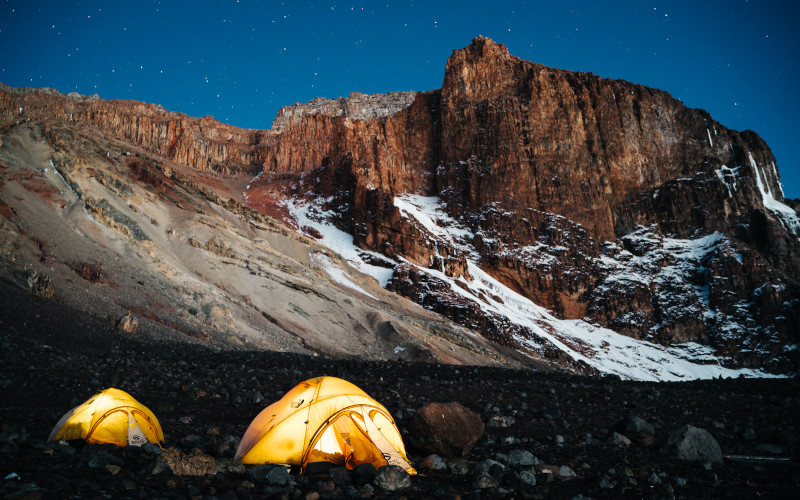
Sleeping under the stars on Mount Kilimanjaro
The Northern Circuit is an extension of the Lemosho route that uses the northern traverse around Mount Kilimanjaro.
It is the longest and quietest route on Kilimanjaro and can be completed on an 8 and 9-day itinerary. Here are the camps on the Northern Circuit.
- Start Gate: Londorossi (2,100 meters)
- Mti Mkubwa Camp (2,820 meters)
- Shira Camp 1 (3,500 meters)
- Shira Camp 2 (3,850 meters)
- Moir Hut (4,150 meters)
- Buffalo Camp (4,020 meters)
- Third Cave Camp (3,870 meters)
- School Hut (4,750 meters) to Summit (5,895 meters)
- Descent: Millennium Camp (3,820 meters) or Mweka Camp (3,100 meters)
- Finish Gate: Mweka Gate (1,640 meters)
Mweka Camps
The Mweka route is used for descent only. There are two camps on the Mweka, the Millennium Camp (3,820 meters) and Mweka Camp (3,100 meters)
Kilimanjaro Base Camp
Mt Kilimanjaro has three base camps or high camps:
- Barafu Camp (4,670 meters): Barafu base camp is used by the hikers on the Lemosho, Machame and Umbwe routes. It follows a zigzag route up the slopes of Kibo to the sub-summit, Stella Point (5,739 meters).
- Kibo Hut/Camp (4,700 meters): Kibo base camp is used by hikers on the Marangu and Rongai routes. It follows a slightly steeper and longer path up the slopes of Kibo to the sub-summit, Gilman’s Point (5,685 meters).
- Crater camp (5,800 meters): Crater base camp is the highest camp on Mount Kilimanjaro, and is situated in Kibo’s volcanic crater. Due to its altitude, one needs to properly acclimatise before sleeping at crater camp.

Plan your Kilimanjaro trek
Get a quote from my recommended local Kilimanjaro operator
My Final Thoughts
And there you have it: A quick and easy guide on the Mount Kilimanjaro campsites. Each campsite is an important milestone in conquering this African giant. Looking for more climbing Kilimanjaro advice?
Check out my other Kilimanjaro Guides:
- Guide to the best Kilimanjaro routes
- Guide to Mt Kilimanjaro weather
- Guide to Kilimanjaro hike cost
- Guide on gear for climbing Kilimanjaro
- Kilimanjaro training plan
- Facts about Mt Kilimanjaro
Sources: Tanzania Tourist Board, UNESCO World Heritage Convention List

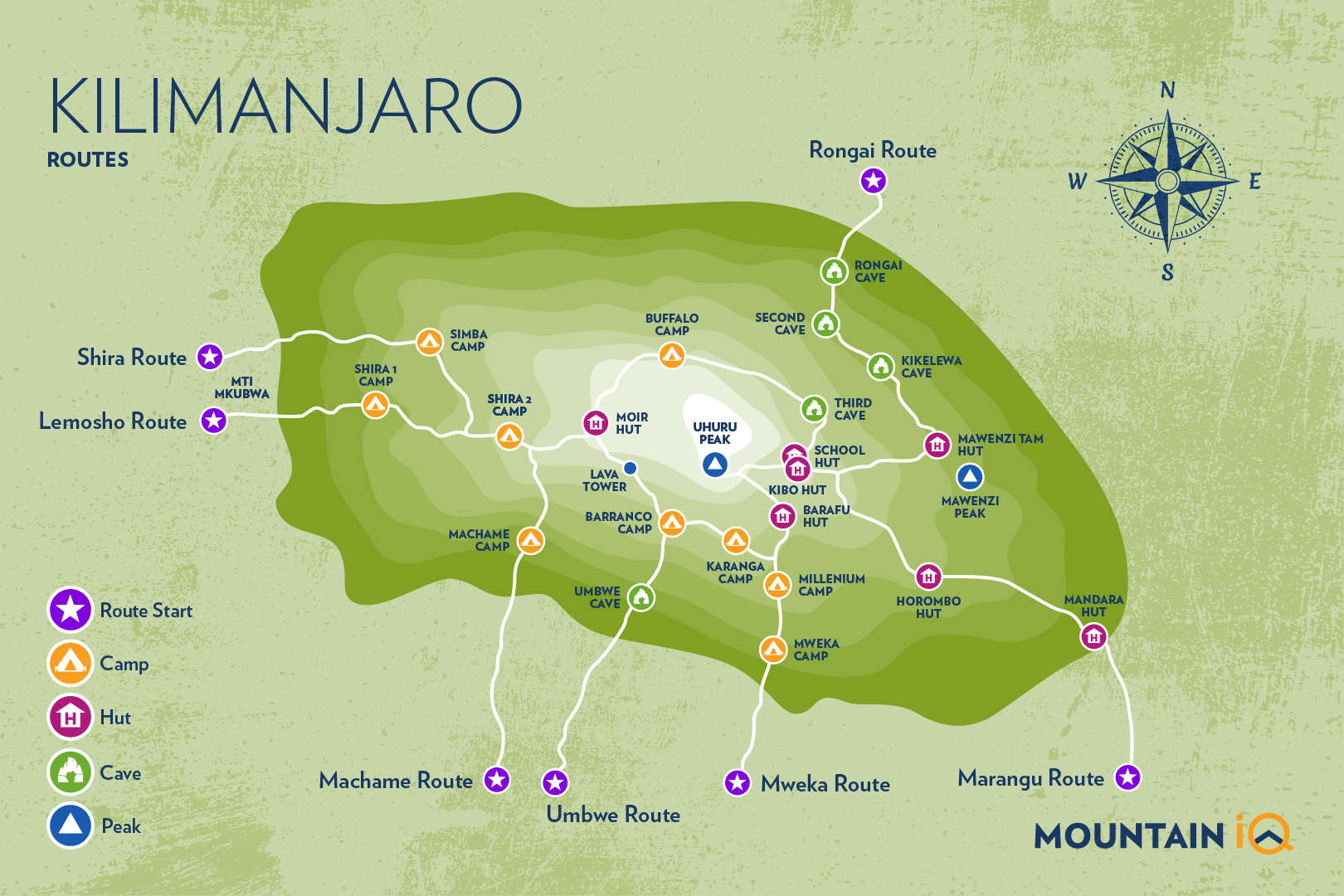
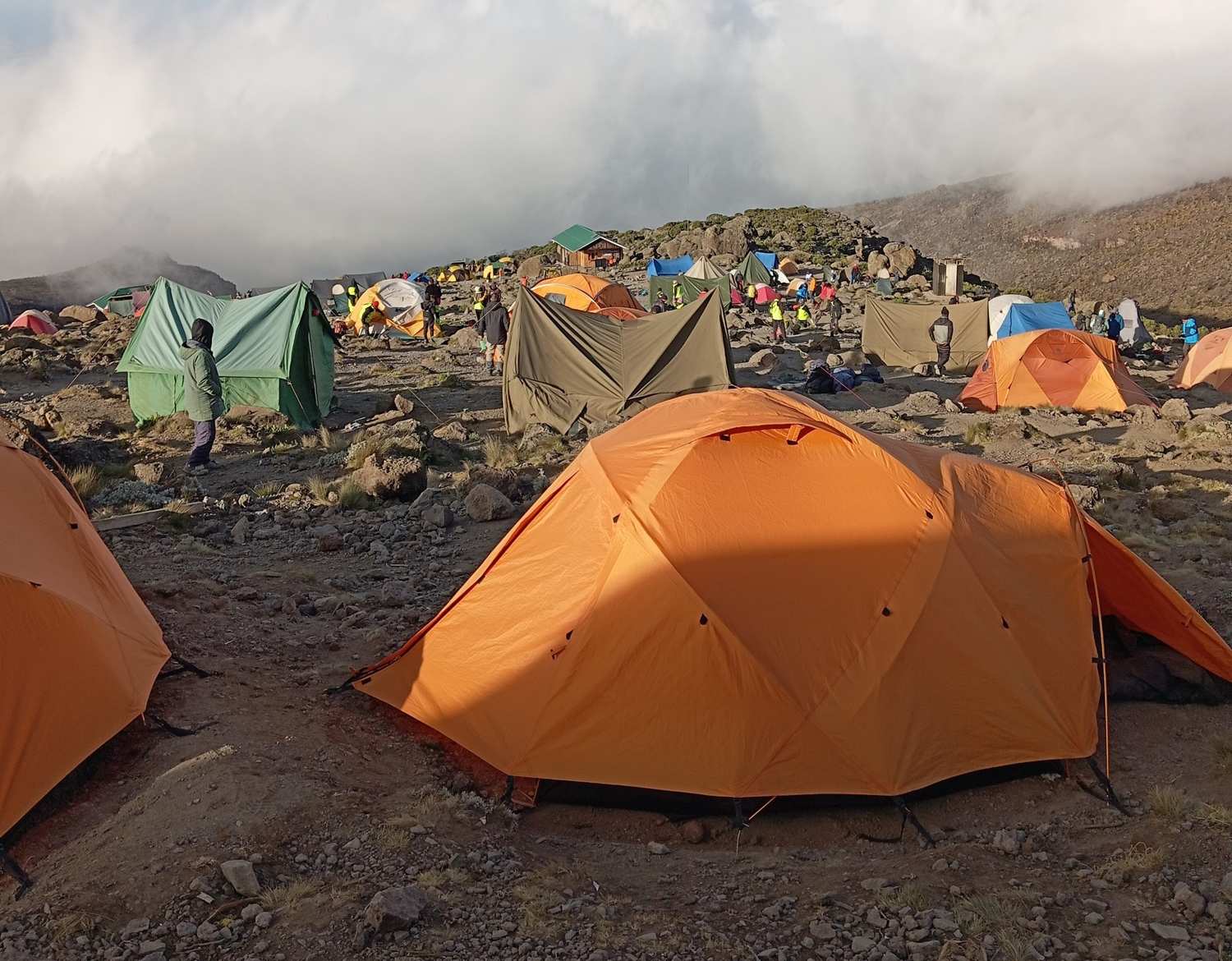
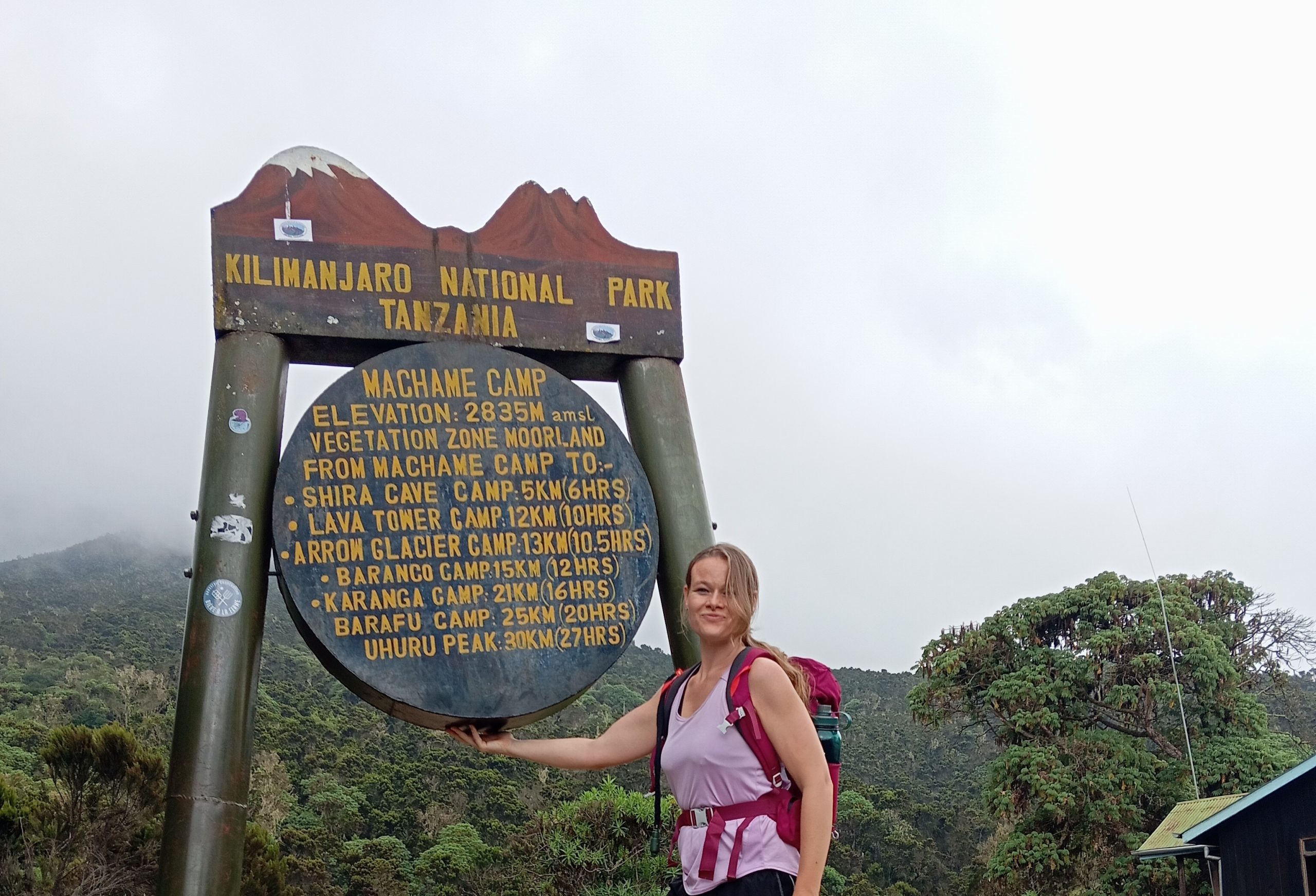
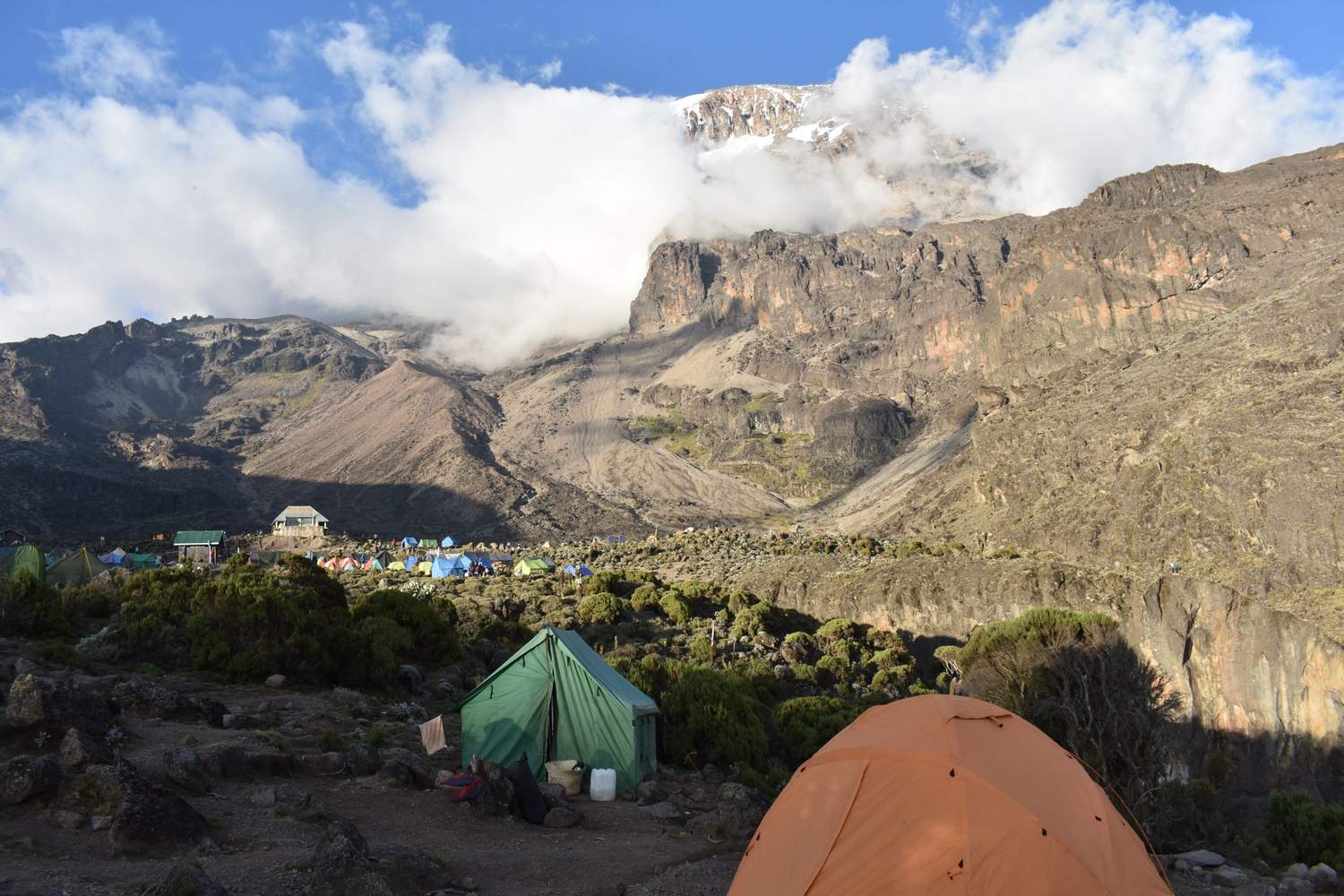
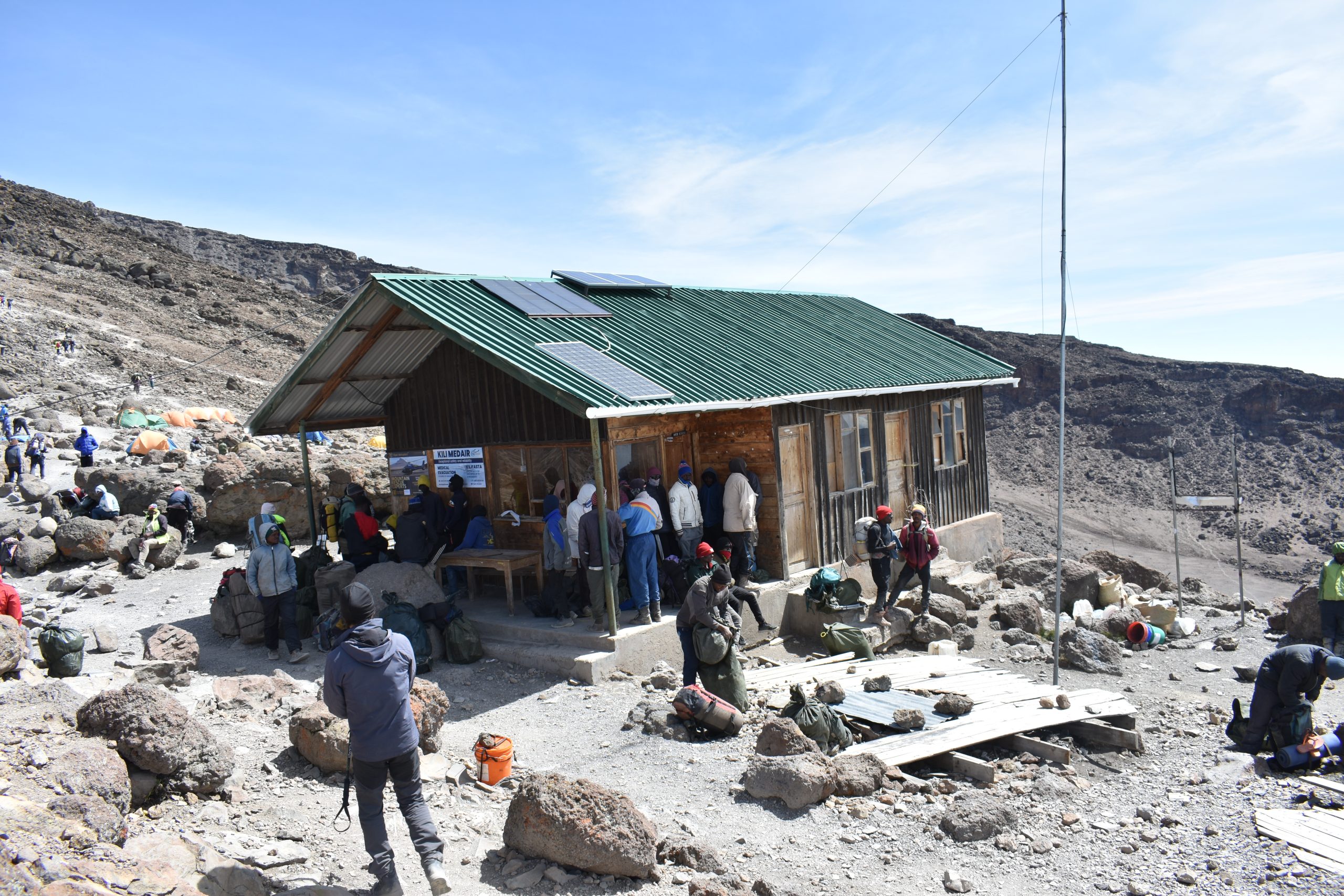
Hi,
Are there any options for doing a 3-day trek to a base camp or to one of the huts?
We don’t have enough time to summit but want to trek part of Kili.
Thank you!
Katie
There are a few operators that offer day hikes in Kilimanjaro national park, but it is not common and quite expensive as you still need to purchase a climbing permit. Your best bet is to hike Mount Meru.
I appreciate your information its help me to get more information concrening Kilimanjaro elevation camps, also it help me to get more information in my field training.